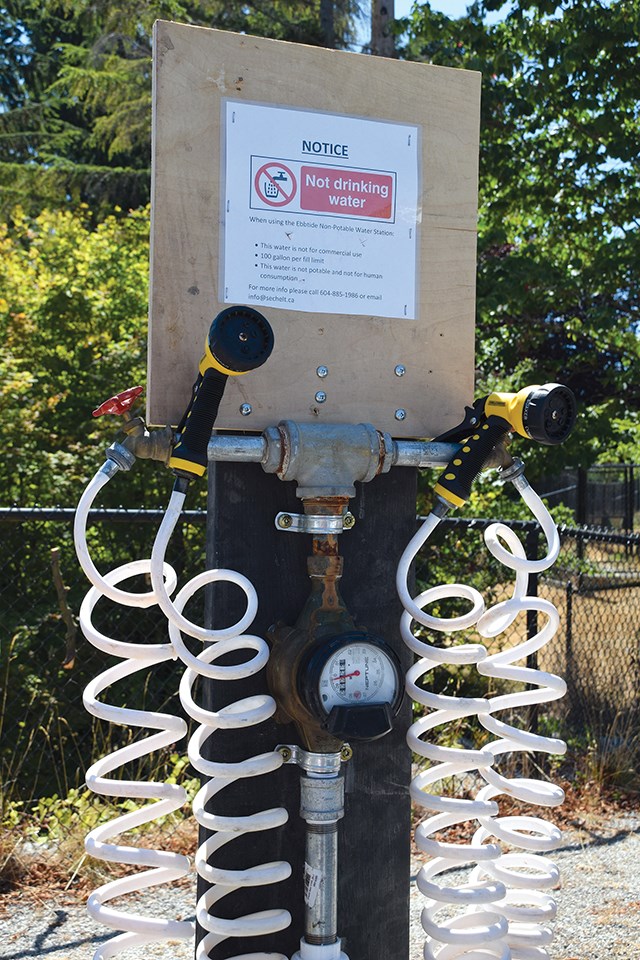An independent test from Aug. 6 on Sechelt’s non-potable filling station water shows low levels of E. coli present. Water quality analysis results, posted on Sechelt.ca, indicate one E. coli colony forming unit per 100 millilitres of water. This is within the guidelines set by the province for agricultural uses.
A zero level of detectable E. coli and total coliforms is set in guidelines for Canadian drinking water quality. As water from the station is not disinfected, Sechelt emphasizes that it is not safe for human consumption or bathing. It also reminds the public that edibles grown in gardens watered from this or any source should be washed in potable water before eating.
Filling station water tested within agriculture use guideline levels for other parameters including total coliforms, metal and minerals. Test results were reviewed by Vancouver Coastal Health and the province. Both have confirmed to Sechelt that the water is safe to use on vegetables, trees, shrubs, flowers, and grasses.
The testing was conducted by Caro Analytical Services. Full test results are posted on Sechelt’s website.
Sechelt has applied to the province for a licence for the groundwater source that feeds the station and is used for watering its hanging baskets and at its Water Resource Centre. It states that the province has confirmed that public use of the water can continue while the licence is being processed.
On Aug. 18, Emma Webster of the Ministry of Forests, Lands, Natural Resource Operations and Rural Development wrote in an email shared with Coast Reporter that the application “is in the licensing queue waiting to be reviewed.”
Since 2015, the municipality has made water available to the public at the filling-station for outdoor, non-consumptive uses when regional water restrictions reach Stage 2 or higher.



